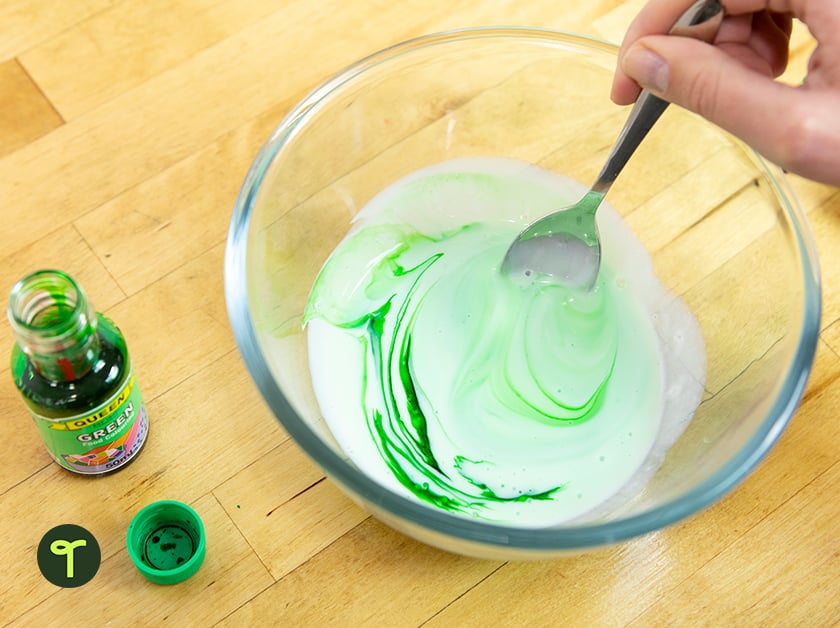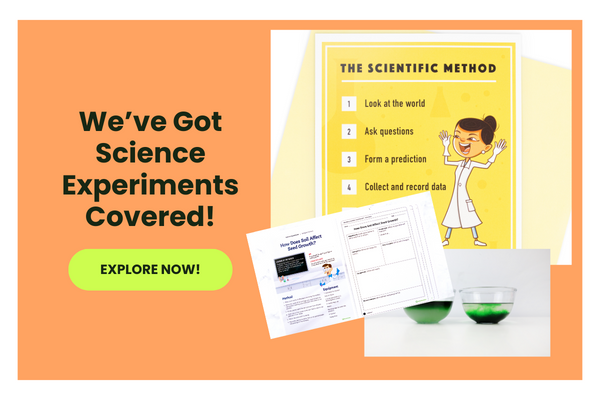There are few things that captivate kids’ attention quite like slime. It’s ooey, it’s gooey, and it’s surprisingly calming when your students sit and play with it. Best of all? Making slime with your students is a great science lesson. It introduces kids to chemical reactions, the concepts of liquids vs. solids, molecules and plenty more.
Needless to say, the teachers here at Teach Starter are big fans of making slime, whether as a classroom activity or to make gifts for your students. Can you think of a better Halloween treat than a small tub of fluffy slime to take home? Aside from maybe a spooky bookmark, we can’t!
Over the years, our teacher team members have tested dozens of slime recipes, and we came up with the easiest way to make slime in your classroom. Read on for step-by-step instructions on how to make slime with kids, plus some tips on fun science experiments you can do and other ways to use slime in your classroom.
How Do You Make Easy Slime?
We have learned through a fair amount of trial and error that not every slime recipe is exactly easy. We wanted to make sure we shared a recipe that wasn’t just easy enough for kids to do but also wouldn’t take too much time.
With just five ingredients in this easy slime recipe and a process that only takes 5 minutes to complete, we promise this is all you need to read to find out how to make slime for kids. We even limit the mess to just one bowl necessary for the recipe.
Read on for our favorite recipe using glue and contact lens solution, then explore our ideas for implementing this kid favorite in the classroom!
How to Make Slime for Kids
Let’s start off with what you’ll need to gather. Our favorite slime recipe is glue-based — specifically Polyvinyl Acetate (PVA) glue, the white glue you’re probably already using in the classroom (Elmer’s is PVA glue, for example). You’ll also need to hit the drugstore or grocery store for a few other items on the slime recipe list.
This particular recipe makes enough slime for one student — you can simply increase your amounts for additional students, or ask your students to do the math for you as a skills-building challenge.
Slime Recipe Ingredients:
- 1/2 a cup of PVA white glue
- 1/2 teaspoon of baking soda
- 2 drops of food coloring
- 1 tablespoon of eye contact solution (must contain boric acid and sodium borate)
- Baby oil
- Spoon (for mixing)
- Glass bowl
Slime Recipe Instructions
Got all your ingredients together? It’s time to make your slime!
Step 1: Mix the PVA glue with 1/2 a teaspoon of baking soda.
Step 2: Choose the color of food coloring you like — we went with green for that classic slime look — and drop a couple of drops into the mixture. Mix well!

Step 3: Now for the magic solution! Mix in 1 tablespoon of eye contact solution — this is the activating ingredient. If you want to keep your costs down, you can buy regular saline solution rather than the more expensive contact solution. Just make sure there are both boric acid and sodium borate in the ingredient list.
Step 4: Add a few drops of baby oil to prevent the slime mixture from being too sticky. The oil will help to make the slime shinier as well!
Using slime in science class? This science investigation process guide will come in handy!
Voila! After mixing the ingredients together, you have got the perfect slime.
How to Use Slime in the Classroom
Now that you have our favorite slime recipe, what are you going to do with it? Here are just a few ways our teacher team uses this recipe with students!
- Introduce Procedural Writing — Plan slime-making as an activity to complete prior to learning about procedural (how-to) writing.
- Practice Comprehending Non-Standard Informational Texts – Share this slime recipe to give students practice synthesizing learning from a set of instructions given in a nonfiction/how to text.
- Chart Observations and Make Comparisons — Students can add different items to their slime to see if they can make it bounce, float and more! Make more fluffy slime and compare it to slime that’s liquidy and stringy, add Silly Putty to the mix and more so students can make comparisons about different characteristics.
- Fun Friday Activity — Looking for a simple Fun Friday activity? Making slime with your kids is almost sure to fit the bill, and it can then be used as an in-class fidget toy!








Comments